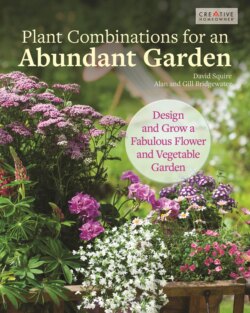Читать книгу Plant Combinations for an Abundant Garden - A. & G. Bridgewater - Страница 29
GARDEN BUILDINGS
ОглавлениеThere is a long tradition of householders making all manner of garden structures from greenhouses, sheds, porches and gazebos to log cabins and summerhouses. If you enjoy basic “do-it-yourself,” are good with a saw, hammer and drill, and are keen and enthusiastic, then there is no reason at all why you cannot build just about any garden shelter that strikes your fancy. Don’t forget, however, that the key words here are “keen” and “enthusiastic”!
What are the possibilities?
SHEDS
SITING A SHED
Walk around your garden and try to visualize the perfect setting for a shed. Of course, much depends on what sort of shed you are looking to build, but ideally it needs to be positioned on dry, high ground, in a quiet spot, with the doors and windows looking towards a nice view. If you can imagine yourself sitting in the shed – dry, warm, with no noise, and sheltered – then you will probably have got it just about right.
A small, apex-roofed, free- standing shed.
A medium-sized, slope- roofed shed.
This shed has double doors for easy storage.
This small shed will fit snugly into a corner.
Shed foundations
A shed needs to be built on a solid foundation. A good foundation is made up from compacted gravel topped with concrete. Foundations should be built according to your local building code.
GREENHOUSES
Traditional apex design
Modern apex design
Large lean-to
Octagonal design
Mini lean-to
Combination shed/greenhouse
SITING
A greenhouse should be set on dry ground away from anything that is likely to cast shadows or scatter debris, meaning buildings and trees. If you have no choice other than to site it near a fence or a hedge, then try to place it so that it is on the sunny, sheltered side.
Foundations
The average, small, rectangular greenhouse can be set on concrete blocks – one at each corner, with a row of blocks running in through the doorway.
Screening
In mid-summer the interior of a greenhouse can get hot enough to kill the plants within. You can mitigate that heat with automatic vents and by using netting or fabric to create shade.
Mini plastic greenhouses
While a small plastic greenhouse is usually fine for growing a few tomatoes – but even then it can swiftly overheat – it is not a very attractive option from a design point of view.
Barn design formed of sheet glass.
Modern design made of plastic sheeting.
Cloche
Traditional bell jar design made out of blown glass.
SUMMERHOUSES
SITING
A summerhouse can be a magical place – for children sleeping over, for a quiet drink, or for a doze and a read – if it is well sited. It needs to be positioned on dry ground, away from dank corners, with the doors and windows facing the afternoon sun.
Summerhouses can introduce an upmarket quality and are good for storage and leisure.
Summerhouses can also double up as play rooms for children.
A large summer-house can be used as an occasional guest room.
A large summerhouse with insulated walls can be used as a garden office.
Foundations
Ideally, the summerhouse needs a firm, dry foundation. The best option is to lay a slab of concrete underneath, and then to set the summerhouse up on pressure-treated joists.
ARBORS
SITING
In the sense that an arbor is designed to be an eye-catching feature, it needs to be sited where it fits into your overall scheme of things – for example, in a corner with climbing plants scrambling over it, or looking out over a pond. If you know that you are most likely to use the arbor in the late afternoon, make sure it takes best advantage of the sun at that time.
A traditional arbor complete with trellises sides and back and roses growing over it to provide color and scent.
Foundations
Although much depends on the design of your particular arbor, just make sure that its base is high and dry. Foundations made from wooden lumber (posts, beams or joists) shold be made from lumber that has been treated with a presrvative that is designed for “ground contact.”
Play houses
While a play house needs to be sited on dry ground, away from dank corners, and in the sun – just as with a summerhouse – it also needs to be near the house and in full view. It is vital that you can see and hear the children at play. Better yet, join the fun and take part in their imaginative play.
Kids will enjoy the exciting bright colors.
A “Wendy” house gets its name from the Peter Pan story.
